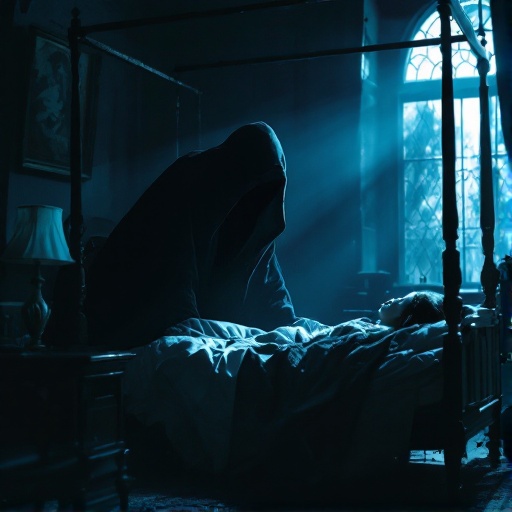Sleep paralysis. Just the words can send a shiver down your spine.
Waking up, unable to move, often accompanied by terrifying hallucinations… it sounds like something straight out of a horror movie.
And for those who experience it, it can feel just as terrifying. But what if I told you that sleep paralysis, while unsettling, is a surprisingly common and generally harmless phenomenon?
It’s time to debunk the myths and shed some light on the science behind this sleep disorder.

The Science of Sleep Paralysis:
Sleep paralysis occurs during the transition between sleep and wakefulness. During REM (rapid eye movement) sleep, your body is essentially paralyzed to prevent you from acting out your dreams.
Sleep paralysis happens when your mind wakes up before this paralysis wears off.
You’re conscious, but your body is still in “sleep mode,” leaving you temporarily immobile.
Why the Hallucinations?
The hallucinations associated with sleep paralysis often fuel the fear. These can range from sensing a presence in the room to seeing shadowy figures, hearing voices, or even feeling pressure on the chest.
These are often explained by the intrusion of REM sleep imagery into waking consciousness.
Your dreaming mind overlaps with your waking reality, creating a disorienting and often frightening experience.
It’s Not Supernatural (We Promise):
While cultural folklore often attributes sleep paralysis to supernatural causes like demonic visits or alien abductions, the reality is far less mystical.
It’s a neurological quirk, often triggered by factors like:
- Sleep deprivation: Lack of sleep disrupts your sleep cycles, making sleep paralysis more likely.
- Irregular sleep schedules: Shift work or frequent jet lag can increase your risk.
- Stress and anxiety: Mental health factors can play a significant role.
- Sleeping on your back: This position has been linked to a higher incidence of sleep paralysis.
Coping Strategies: What You Can Do:
Knowing the science behind sleep paralysis can be the first step towards overcoming the fear.
Here are some strategies to cope:
- Recognize it: Understanding that it’s a common, harmless sleep disorder can lessen the anxiety.
- Focus on small movements: Try wiggling your fingers or toes. This can help break the paralysis faster.
- Deep breathing: Concentrate on your breath to calm your nervous system.
- Remind yourself it’s temporary: Sleep paralysis typically only lasts a few seconds to a few minutes.
- Improve sleep hygiene: Maintain a regular sleep schedule, create a relaxing bedtime routine, and avoid caffeine and alcohol before bed.
When to Seek Help:
While generally harmless, if sleep paralysis is frequent, severe, or causing significant distress, it’s important to consult a doctor or sleep specialist.
They can rule out other underlying sleep disorders and offer further guidance.
Sleep paralysis can be a frightening experience, but it’s crucial to remember it’s not a supernatural attack.
By understanding the science behind it and implementing coping strategies, you can take control and reclaim a peaceful night’s sleep.